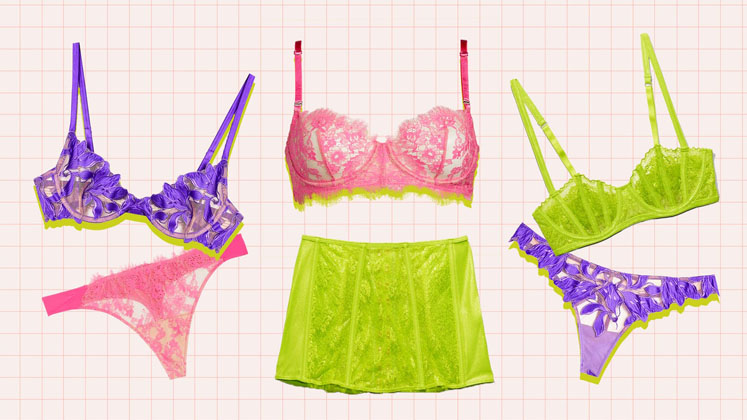
In 2019,Statista valued the global lingerie retail market at US$ 32.07 billion even if as per Kenneth Research,the global lingerie market is expected to reach an astounding US $ 62 billion by 2024.
A promising product category as it is, manufacturing destinations are vying to make the most of the opportunities that are in offer. Although China still tops the list of lingerie exporting countries, it is the competition between the others that has garnered more interest.
Apart from China, some other manufacturing destinations like Hong Kong, Sri Lanka, Indonesia, India, Turkey and Vietnam are amongst the major players in lingerie space even as some reports maintain Sri Lanka is the second largest exporter of women’s underwear to the United States and the European Union, accounting for almost 10 per cent of the total market.
Once the fourth largest lingerie exporter with a share of around 5.23 per cent in the global market, Bangladesh (which is next only to China in terms of overall apparel export),has been losing ground to its closest competitor Vietnam before starting to make some amends.
The country’s share in the global lingerie market which stood at US $ 350 million sometime back has already surpassed US $ 500 million mark even as industry insiders put Bangladesh’s annual lingerie export at US$700 million, thanks to the established names actively looking at increasing their footprints and market penetration.
Market share though not very encouraging yet,industry people believe it’s just a matter of time before lingerie shipment touchesthe billion-dollar mark.They have their reasons as to why Bangladesh is primed to be a major player in the global lingerie space in the coming days.
Lingerie and intimatewear export to the USA has emerged as a new strength for Bangladesh’s robust apparel manufacturing industry even as latest available reports underline Bangladesh has shipped US $150.39 million worth of brassieres, including categories such as shapewear and foundation garments in the 11 months of 2021, making the country the fifth top lingerie exporter in the USA even if according to the latest official US custom data, Bangladesh brassieres’ export to the USA gained an impressive 43 per cent growth in January to November period of 2021.
It is not only the established names but also the new players, contributing their bit as they fight it out for fair share of the pie, which has added a new dimension to lingerie manufacturing and exports as more and more lingerie makers plan to augment capacities while others try to work their way up the value chain for better prospects.
“…if we can get hold of a portion of the global lingerie market, our exports will go up by at least several billion US dollars,” claims BGMEA Vice-President Shahidullah Azim while Managing Director of DBL Group Mohammed Abdul Jabbar also maintains there was huge potential for Bangladesh in lingerie.
However, many feel Bangladesh is yet to cover some distance when it comes to moving up the value chain,so as to catch up with the competitors.
“Bangladesh in general is still somewhat lacking in terms of value addition…,”underlines the General Manager (HR) of SQ Group, Shahriat Hossain while adding established players are already at it in the right earnest and are also catering successfully to the premium segment.
Shahriat feels when it comes to value addition, which is a must for long-term sustainability, a lot depends on the proficiency and skill-set of the workers even if fabric innovation, product designs and quality of accessories are also the major determinants towards the same.
SQ Group is a leading garment manufacturer from Bangladesh and a renowned name in intimatewear, catering to a host of global clientele including Marks & Spencer, being a dedicated supplier to the British multinational retailer.
The dedicated lingerie facility of SQ Group, SQ Birichina Ltd., is built on 128,000 sq. ft. area and had initial assembly capacity of 46 modules. However, to augment the style elasticity and cost competence, the company has invested greatly on capacity expansion and built additional 97,000 sq. ft. while extending the capacity to 110 modules from June 2014.
Another reason why more and more garment makers are taking to lingerie is because of its price advantage. Fetching better bargains compared to the regular product categories, lingerie is proving to be a better bet for those who are ready to move beyond the usual mix of shirts, T-shirts and denims to pursue something more profitable and exciting.
“…margins for intimate apparel average 20 per cent to 25 per cent, compared to 10 per cent for T-shirts,” claims Mahbubur Rahman Russell, Chief Operating Officer at KC Lingerie, reinforcing the popular sentiment amongst the ones keen to move out of their comfort zone and try their hands in intimatewear to effectively deal with the shrinking profit margins.
KC Lingerie reportedly has capacity to produce 3.1 million pieces of lingerie items per month from its 57 sewing lines and caters to brands like H&M, COS, Okaidi, Auchan, etc.
Manufacturers put in the efforts to excel and evolve…
Chorka Textile Ltd. (CTL), a sister concern of the Pran-RFL conglomerate, is already planning to kick-start full-fledged double-shift production at its existing unit to meet the growing demand for knitwear, especially lingerie.
“…lingerie markets have been growing every year globally. We have a lot of potential to grab more market share,” states an excited yet concerned Chairman and Chief Executive Officer (CEO) of Pran-RFL Group Ahsan Khan Chowdhury as Chorka struggles to find new workers to set the ball rolling.
In fiscal 2020-21, the company exported lingerie worth US $ 90 million from its Narsingdi-based garment factory even if since its inception in 2013 CTL has invested around US $ 70 million to enhance capacities.
Lingerie is a complicated product that requires the mix of right fabric and tailoring to complement sophisticated design so as to yield a good fit and user satisfaction.
Expectedly so, there aren’t many in Bangladesh to have mastered the art of lingerie making.Names like Apex Group, SQ Group, Hop Lun BD, Blue Planet Knitwears, Chorka Textiles, KDS Group, Zaber & Zubair, Mondol Group, Four H Group,Mahdeen Group,etc., are some amongst those.
Thanks to the efforts of these players, global biggies like H&M, Kmart, Debenhams, Target, O’Stin, Celio, Auchan, Next, Primark, Jules and Walmart are now sourcing lingerie from Bangladesh in substantial quantities, say industry insiders adding many more are waiting to make their presence felt.
Ananta Apparels is another name which has invested in enhancing capacities lately.
It has pumped in a massive Taka 250 crore to come up with a sophisticated lingerie factory in the port city of Chittagong last year only.
Not to leave it at that, Ananta is now planning to add 20 new production lines in it.
Managing Director of Ananta Apparels, Sharif Zahir attributed the planned production capacity expansion to growing demand for lingerie.
To provide the manufacturing unit sufficient raw material support (accessories and fabric play a very important role in adding value), Ananta Apparels is also planning to come up with a synthetic fabric plant at the Mirsarai Economic Zone at an investment of Taka 400 crore.
Meanwhile, to address the issue of manpower — manufacturing process of lingerie items, especially bras, is very complicated, which requires sophisticated knowhow and special skills— Ananta is also reportedly spending substantially in training of the workers.
Overseas players in mix of things
It’s not just the local players; entrepreneurs from mainland China are also planning to establish lingerie units in Bangladesh.
If industry inputs are something to go by, certain amount of business is moving out of China for various reasons, to grab which many are spreading their wings beyond China and entering Bangladesh for good.
There’s also the added advantage of affordable labour in Bangladesh, which also plays a big role in luring those seeking greener pastures here in the country.
Kaixi Fashion Bangladesh Co Ltd., a Chinese textile company has already announced investment of US $ 6 million for a new unit at Dhaka Export Processing Zone, which will produce around 24 million pieces of ladies’ intimatewear annually.
Kaixi’s new unit is expected to generate employment for 2,000 Bangladeshi citizens.
Established in 1995, Kaixi Fashion owns three subsidiaries (Shenzhen Kaixi Fashion Co., Ltd, Shantou Kaixi Lingerie Industrial Co.Ltd, and Myanmar Kaixi Lingerie Industrial Co., Ltd.). They produce, distribute and sell products ranging from traditional knitting lingerie bra, panties, to ‘invisible’ bra pads and straps.
It exports majority of the products to UK, France, Spain, Germany, Australia and Chile.
Given the impetus innerwear has gained lately, it would not be wrong to maintain lingerie is now the chosen product category for many in Bangladesh, who see in intimatewear the future growth path.






